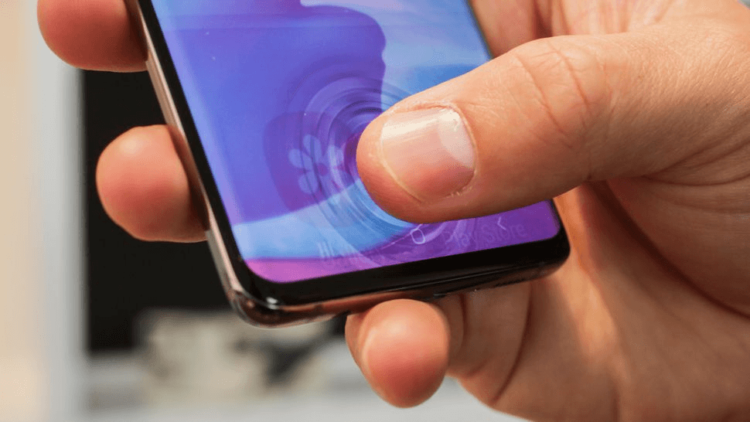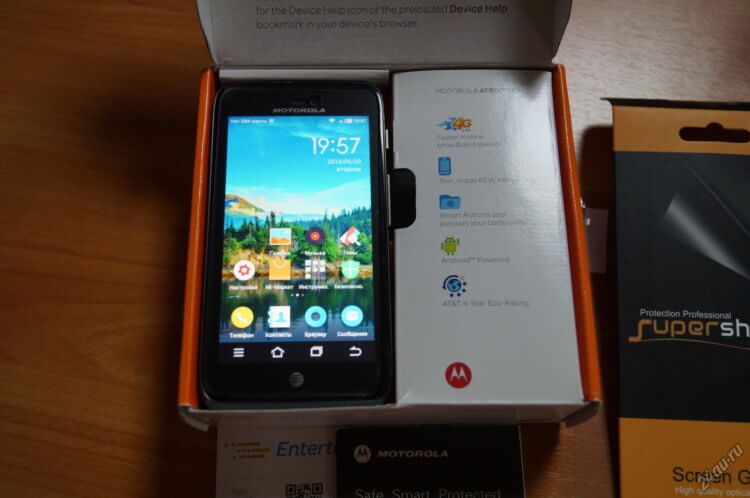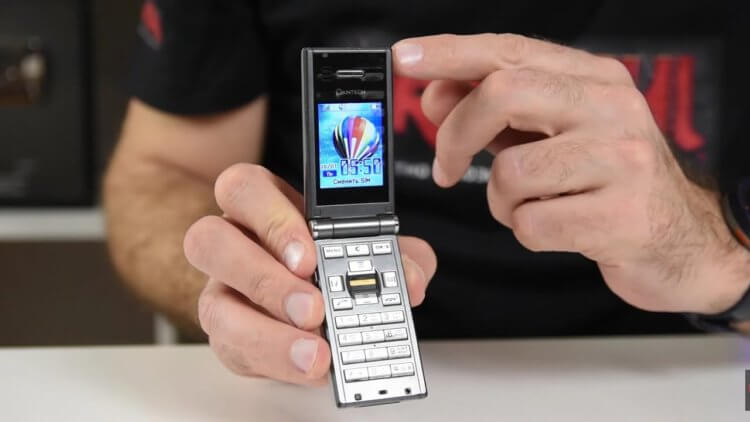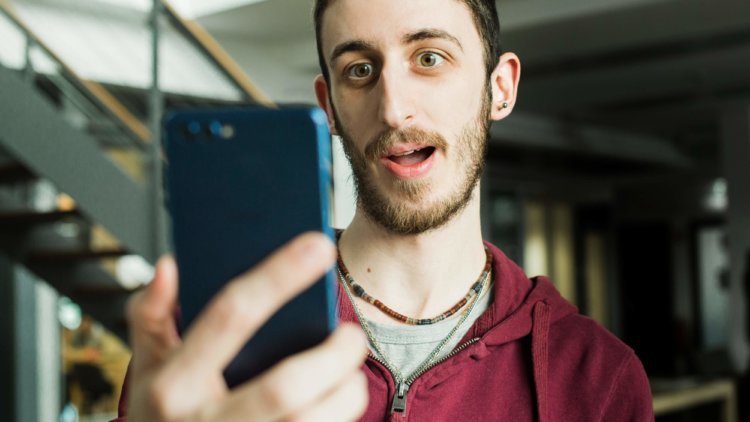Nowadays, we value not only the functionality of gadgets, but also the security they provide us. This concerns not only the fact that no one will see our “photos with cats” or something stronger from home videos, if you know what I mean, but also some of the more everyday functions. There are a lot of examples, but the most striking are bank cards used to pay for purchases and smartphone search systems, which can be disabled by unlocking an unlocked device. In this case, you will not be able to find and disable the Google or Find My iPhone function. In short, there will be protection. But should it be a fingerprint scanner or is it time to let it go?

The in-screen finger scanner is no doubt convenient.
The first smartphone with a fingerprint scanner
In general, the first fingerprint scanner in a smartphone was patented by the company Apple in 2008. Then they did not become widespread, but after a few years, as they say, it began.
In 2011, the Atrix smartphone Motorola was released, which is considered the first such device with a fingerprint scanner. It had other interesting functions, for example, it was the computing brain of an entire laptop, but this is a topic for another conversation and now we will not delve into its characteristics. It should only be noted that the fingerprint sensor was not so deeply integrated into the smartphone system and represented a slightly different function than it is now.

The same Motorola Atrix.
After that, other similar smartphones appeared, but the real explosion in the popularity of this method of unlocking occurred after the release iPhone of 5S with Touch ID on September 10, 2013. It's just that Apple was able to show how to make the scanner convenient. They had it located in the Home button, but the location on the back wall suggested by competitors was also to the taste of many. Although, to be honest, I still cannot accept such an arrangement. But then everyone realized that the scanner can unlock the smartphone and do it instantly without any codes, passwords and pattern keys. Before that, most users did not block their devices at all.
Even before the appearance of the above smartphones, the fingerprint scanner was used in laptops. I can't name the exact model, but back in the mid-2000s I had a computer, it seems, Toshiba, with this way of unlocking. True, it was real pain there. This laptop cost a lot, but the scanner worked, to put it mildly, so-so.
There were also phones with a fingerprint scanner. For example, Pantech GI100, released in 2004. True, the idea of such a serious blocking then “did not come”. In many respects, again, due to imperfect technology, the absence of the need for serious protection and the high cost of such devices.

Pantech GI100.
What are fingerprint scanners
After the appearance of the fingerprint scanner in almost all smartphones, and later in absolutely all, manufacturers had to somehow compete with each other. To do this, they tried to place it in different places. On the front, back, side and even in the screen.
I really liked the scanner in the Power button, as it is really convenient. The first time I encountered him was in the Sony XZ Premium. After that, due to problems with patents, the company refused such a solution, but Honor have several such smartphones, for example, Honor V20 Pro.
Others started teaching the scanner new features. Someone made it so that the smartphone immediately unlocked when you touched the scanner, while others hung control functions on it, turning it into an analogue of a touchpad or a touch button in early models HTC Desire. It was possible to scroll through the content with swipes or activate functions with a double tap. In general, it is convenient, but few people seriously used it.
In general, fingerprint scanners in a smartphone are mainly divided into three types – optical, semiconductor, ultrasonic.
The former use optical methods to obtain a print. Roughly speaking, they simply take pictures of the finger, identifying the pattern on it. Such a scanner is the easiest to trick. Of course, you can't do this with a picture, but there are options. One of the significant disadvantages of such a scanner is its sensitivity to dirt. Now they are not used very often.
Semiconductor scanners use semiconductors to obtain images. They allow you to build a more accurate picture at the point of contact of the finger with the scanner, but they are more expensive. The advantages include a higher response and unlocking speed of the smartphone.
The most expensive are ultrasound scanners. Moreover, they are the fastest and most accurate. To unlock, they build a full-fledged 3D model of the pattern on their finger. An added benefit is their ability to measure your heart rate.
Manufacturers choose a scanner based on the cost of the device and thus can choose the optimal combination of speed, detection accuracy and, of course, the cost of a smartphone. That is why scanners from different smartphones are not always the same.
What's better? Fingerprint scanner or face unlock?
There is no special meaning to explain how a smartphone is unlocked by face, especially since we have already done this, since only two methods are used in this case. The first simply checks the photo from the front camera with the saved image, and the second builds a volumetric model using a special scanner.

Facial scanning is a definite boon.
The advantage of the first method is the price and the possibility of using it in almost any smartphone, and the disadvantage is weak security and terrible work in the dark. The second method is more expensive and not all manufacturers have such technologies, but it is much safer and works in any light, even in complete darkness.
Only Apple spoke about the reliability of this method. When iPhone X came out with such a scanner, it was said at the presentation that the probability of a fingerprint scanner error is one in fifty thousand, and a face scanner with model building is one in a million. That is, such a scanner is 20 times more reliable. Others only talk about convenience.
Leading up to the question of which unlocking method is the best in my opinion, I can say that before iPhone 5S I did not use any locks. I didn't even set a pin code. But then I started and now I can't stop. All my smartphones, regardless of the operating system, were locked.
When I switched to a face scanner, I realized that it is really very convenient. First of all, the convenience lies in the fact that you don't have to do anything. You just need to press the Power button and the smartphone turns on. You can even make the scan start the moment you take your smartphone in your hands – you don't even need to press anything.
This method also has negative aspects. For example, when I ride a motorcycle or snowboard, I cannot unlock my smartphone. You can enter the code, but somehow you don't want to, if you can just go through a biometric check. This is especially true when you just want to read the notification.

You can enter codes, but biometric verification is easier.
The same situation occurs in the summer with glasses. If they have a good level of sun protection, even the point system cannot handle them, and one of the three key components (eyes, nose, lips) becomes unavailable. You can lower the sensitivity of the scanner and select the mode “with glasses”, but you don't want to.
An alternative in these cases is a finger scan. But I believe that he should leave the case. It looks, to put it mildly, so-so, if not to talk about the scanner in the Power button, but there are only a few such smartphones.
In this case, the fingerprint scanner in the screen comes out on top. Moreover, recently technologies have come to the point that they really work well, especially for smartphones belonging to the BBK group (OPPO, VIVO, OnePlus).
In my opinion, such a solution seems to me to be optimal. Face scanning will be the first priority, and if it does not work, then use the fingerprint scanner. I hope that the manufacturers will go exactly this way. It even seems to me that Apple in future generations iPhone will make a screen scanner, although it said that it is outdated. They just say that the scanner on the body is outdated, but on the screen it is really “emasing”.
This also applies to foldable smartphones. Agree that having such technologies, there is simply no point in spoiling its body with this circle. His time has passed, something needs to be changed.
